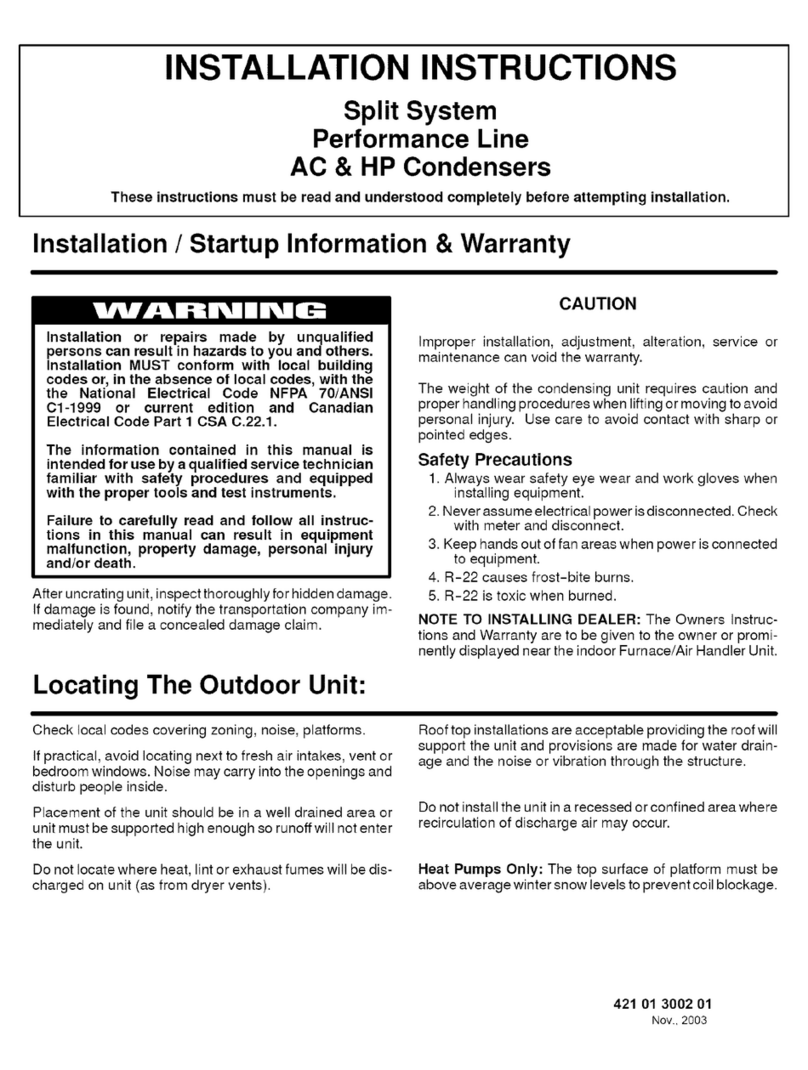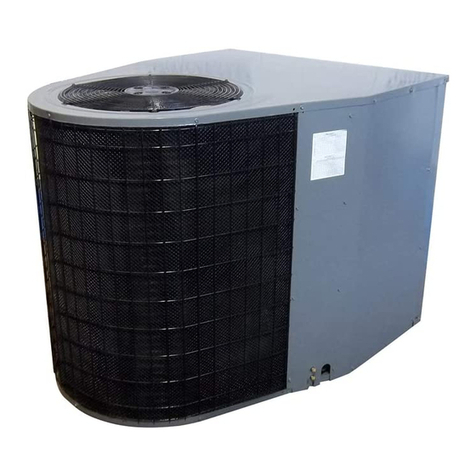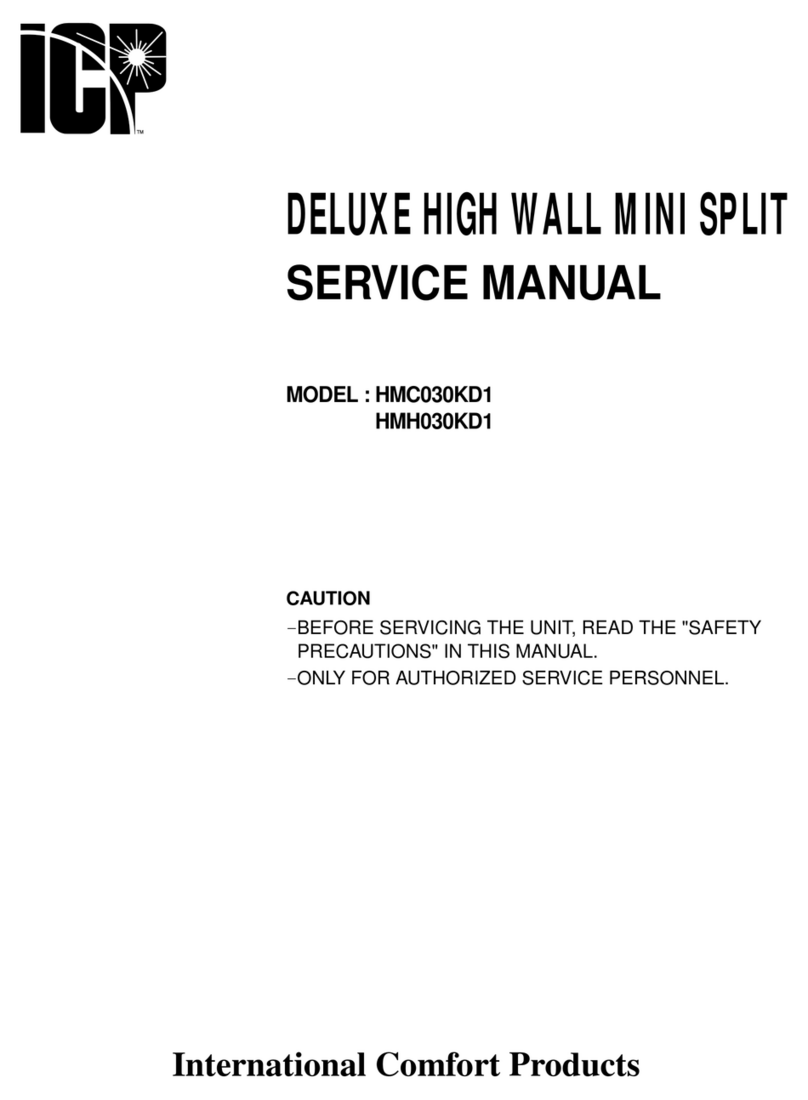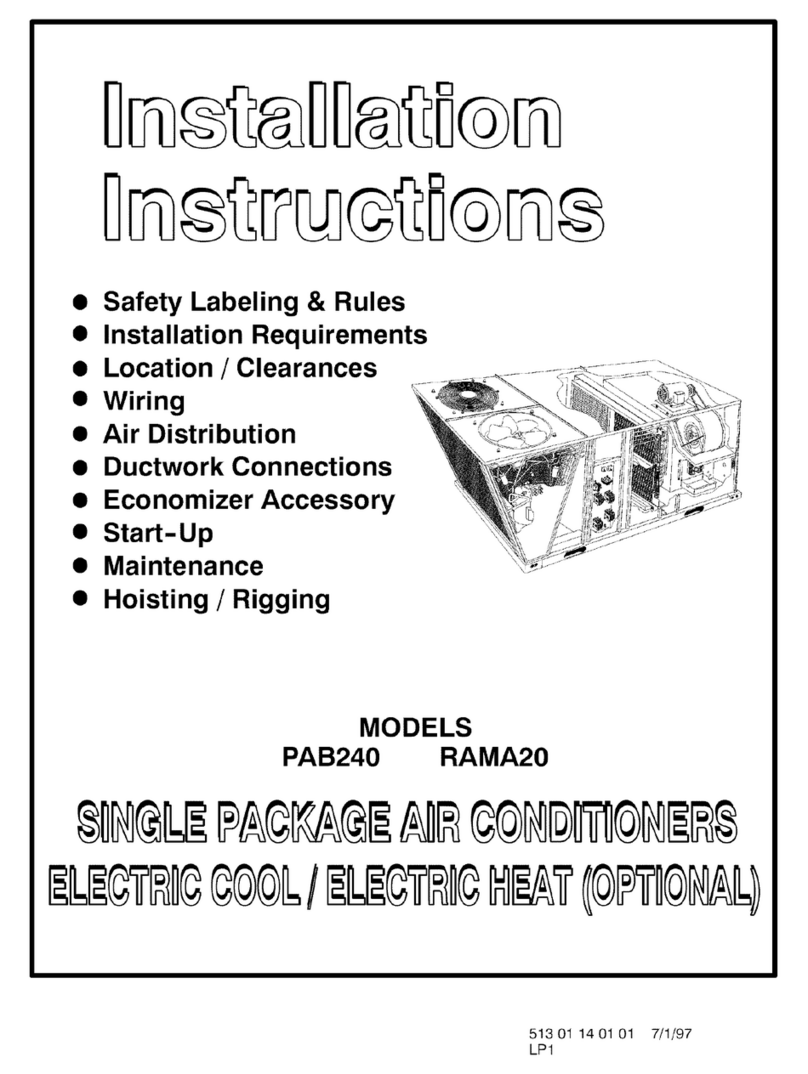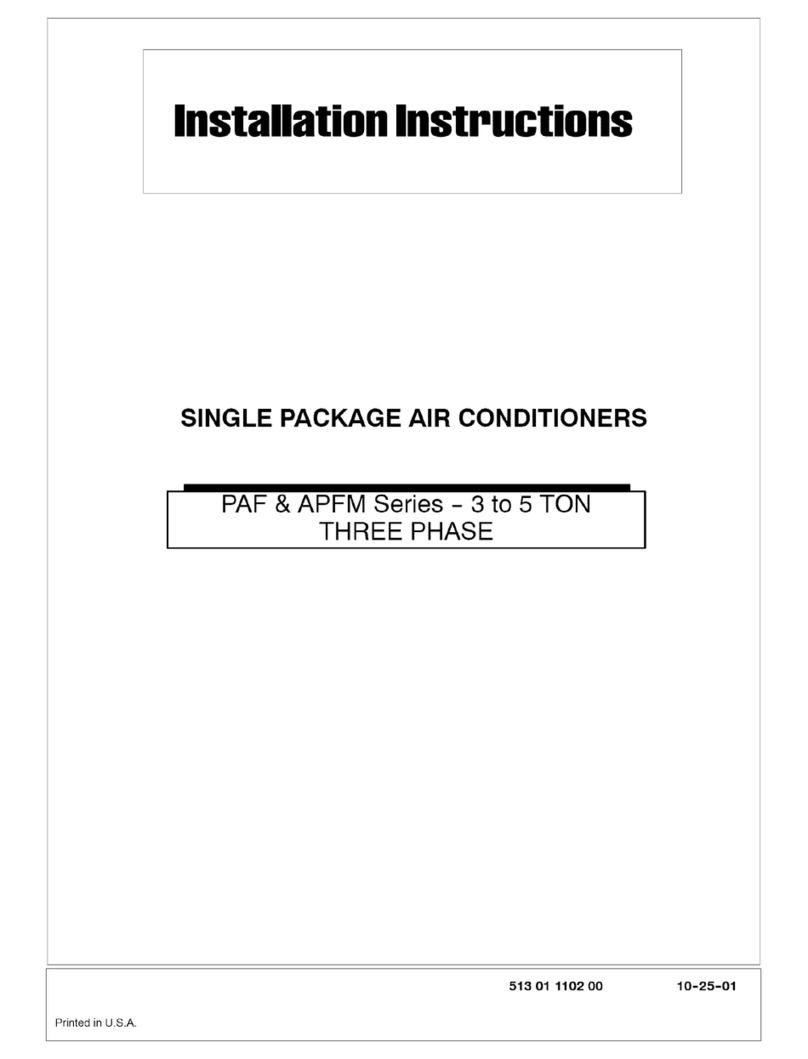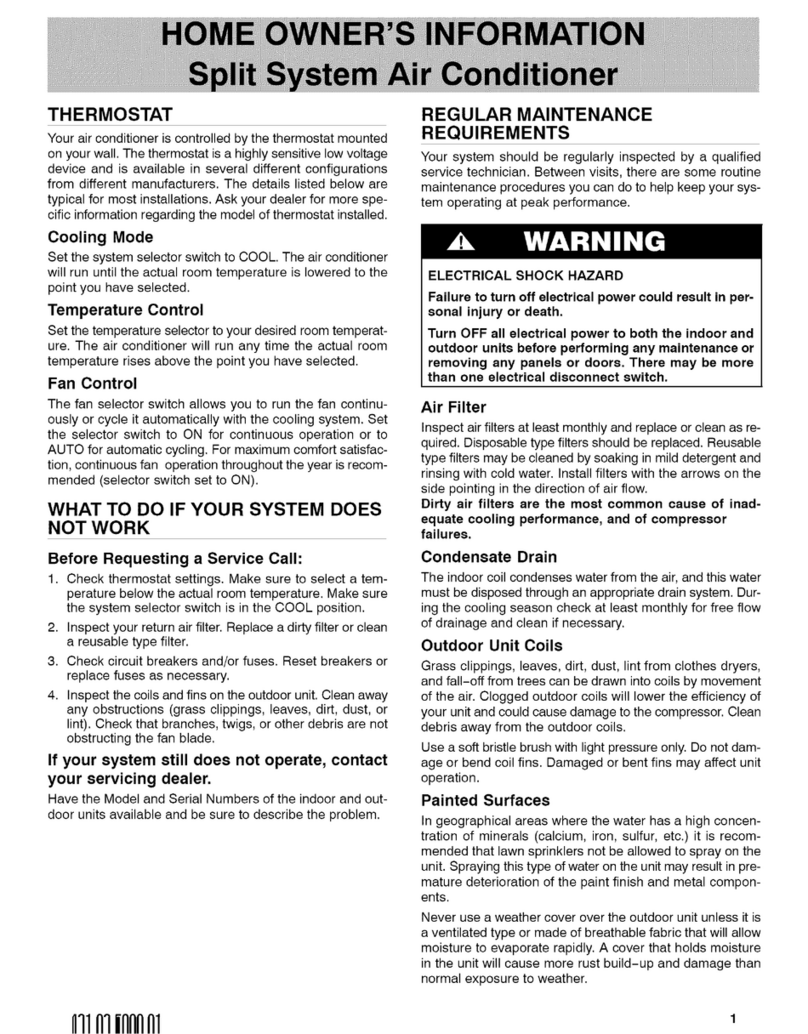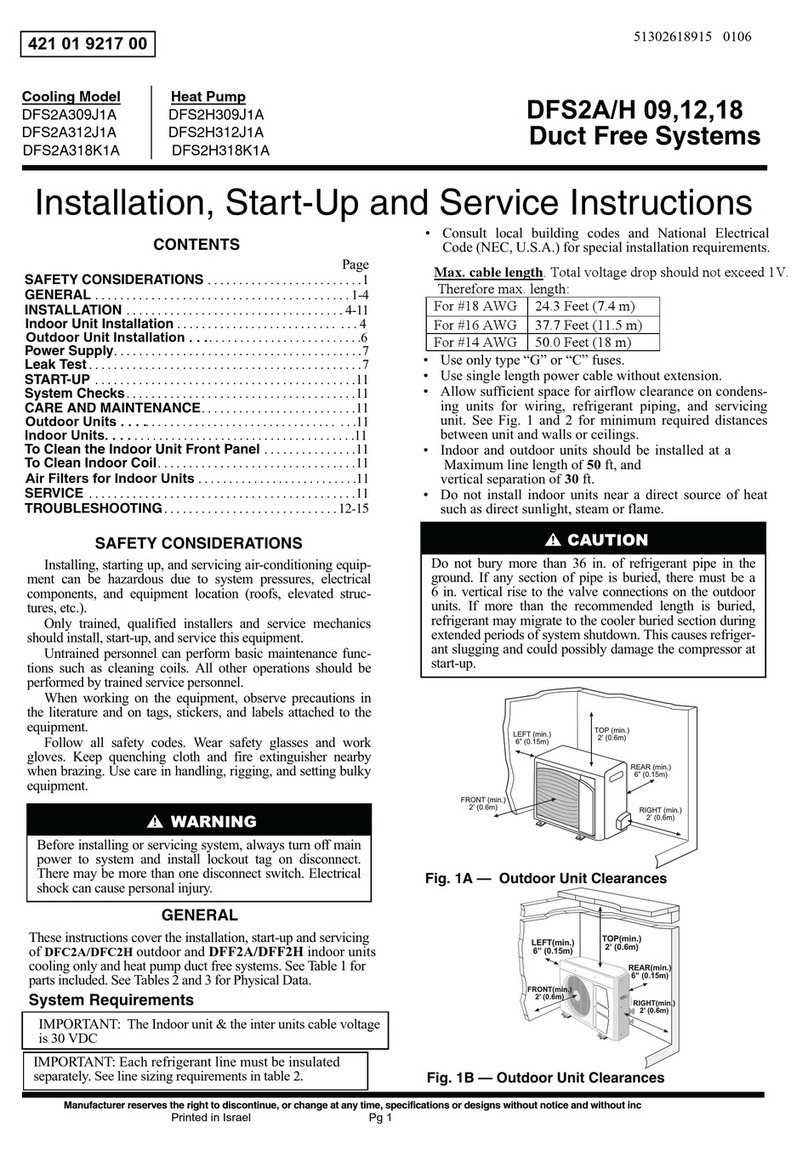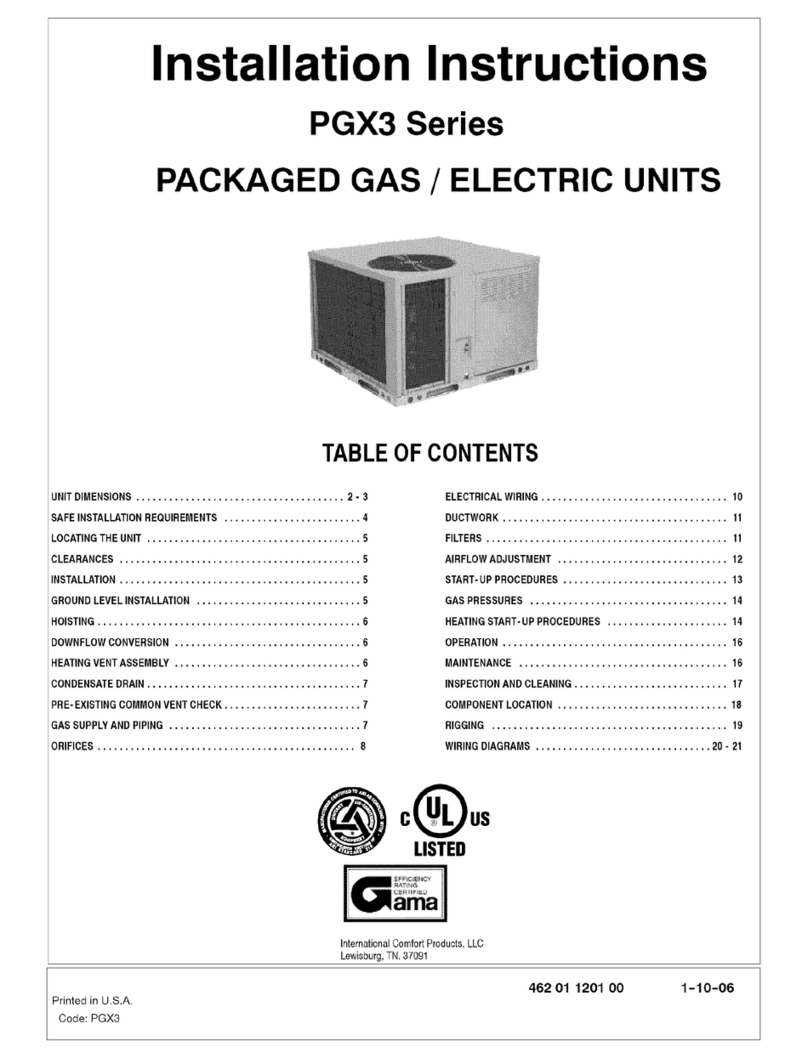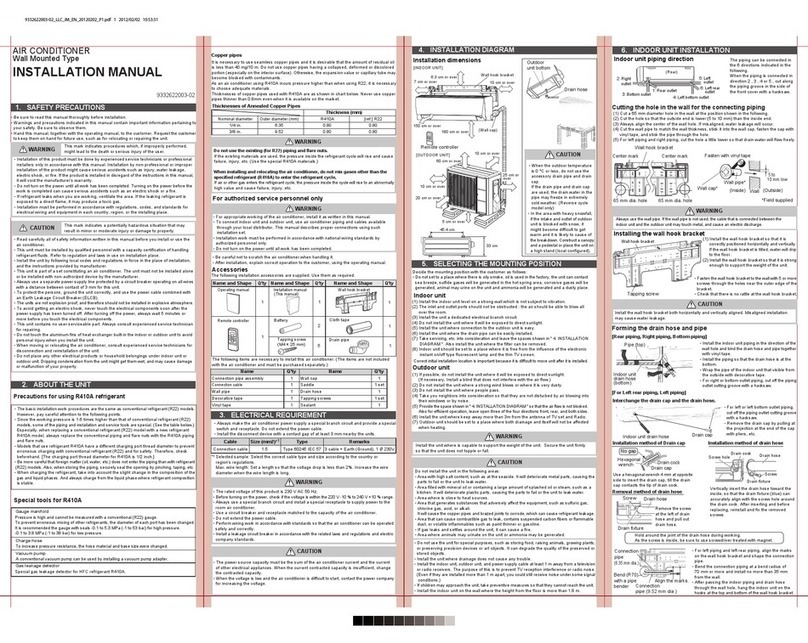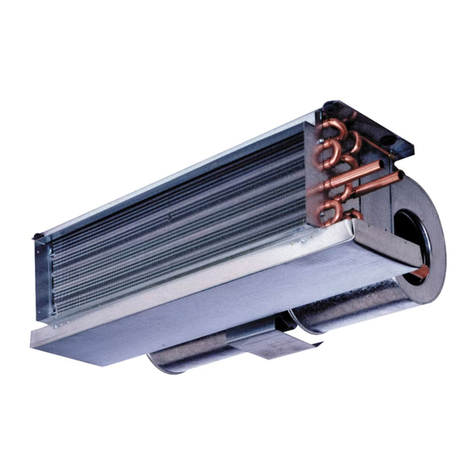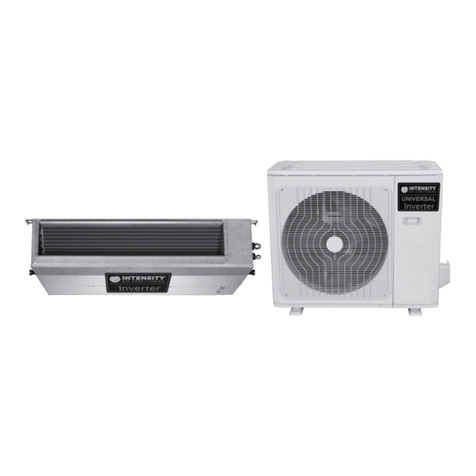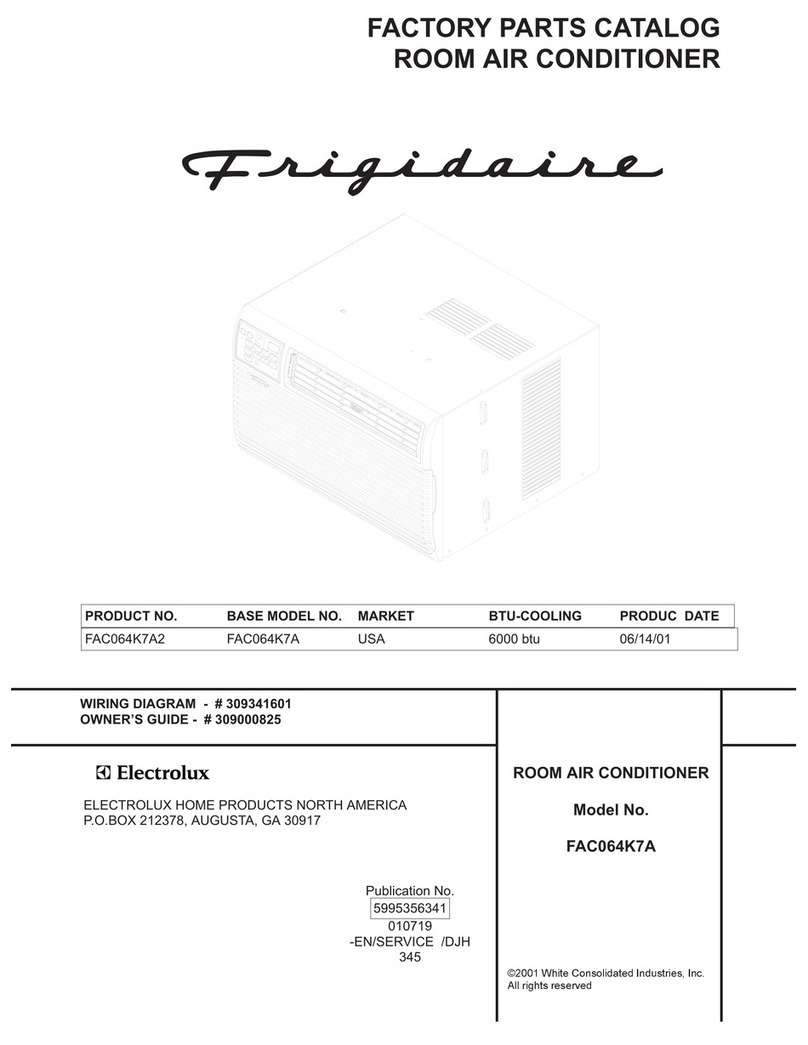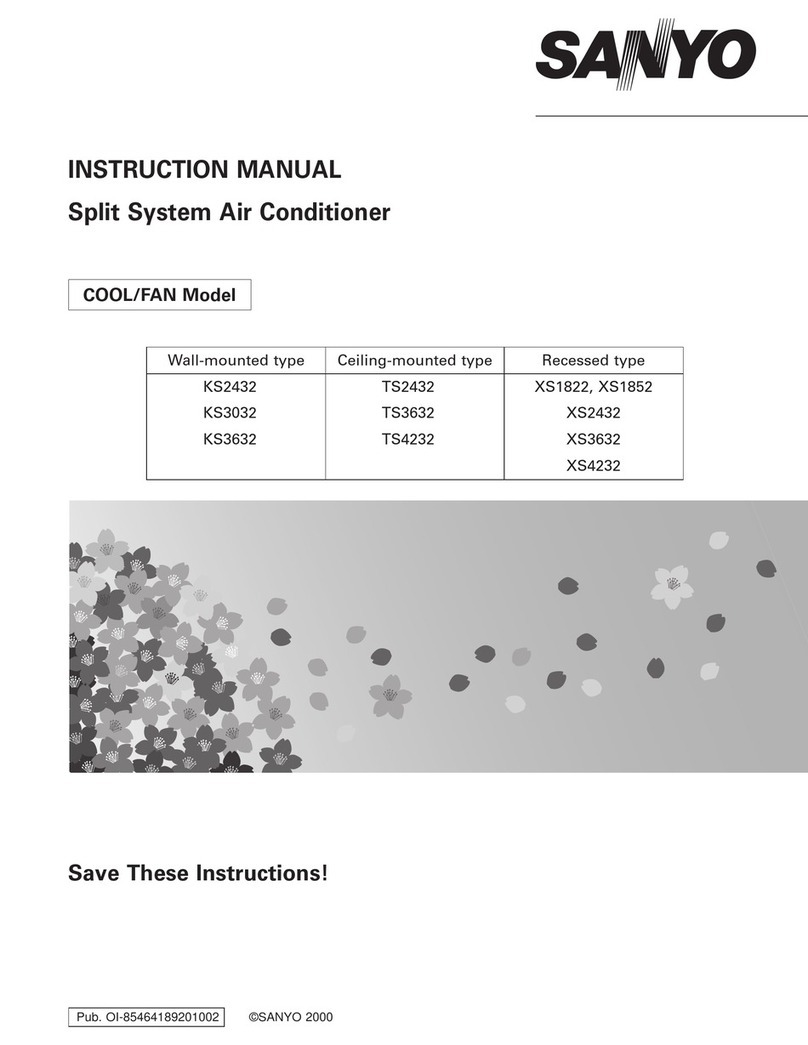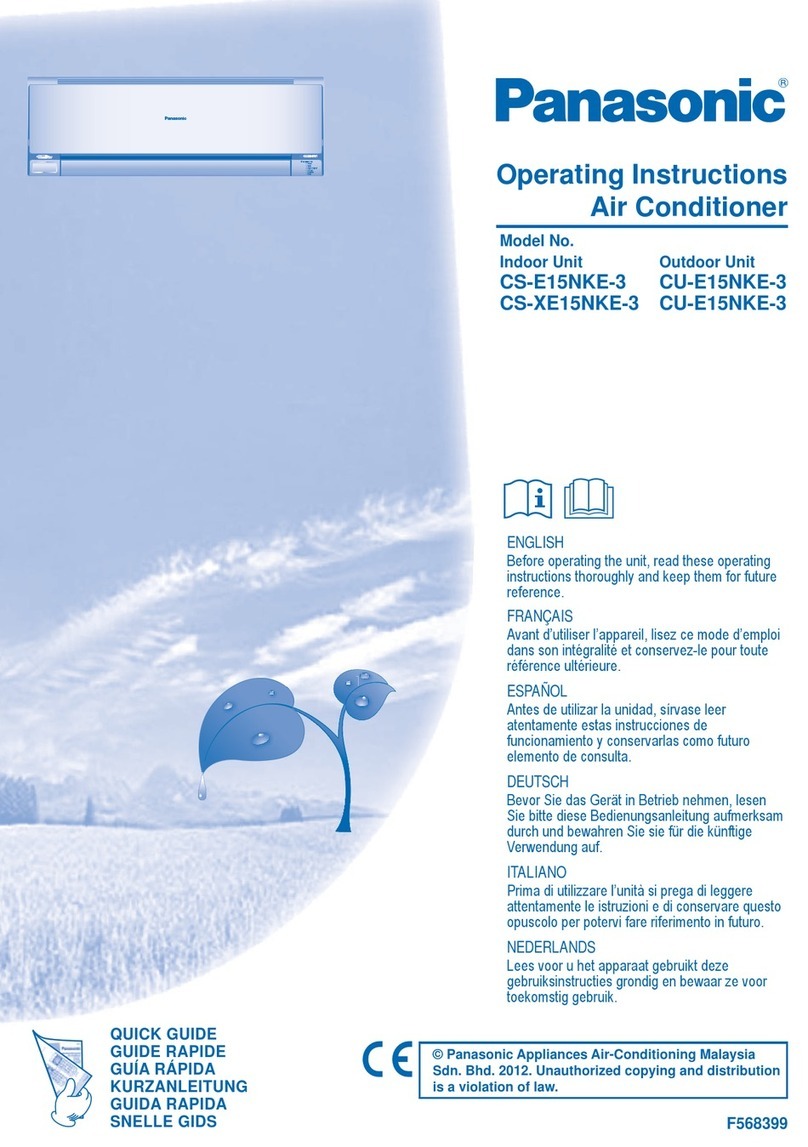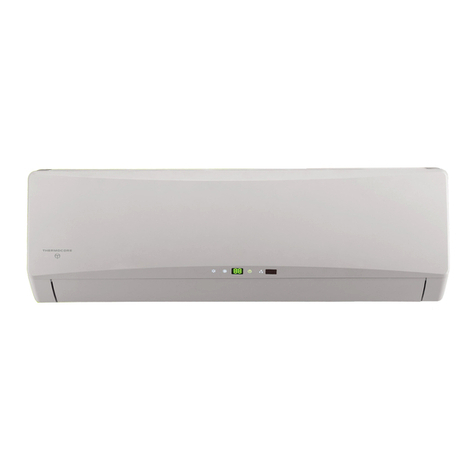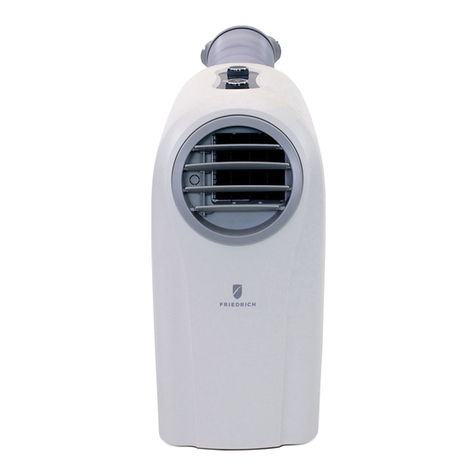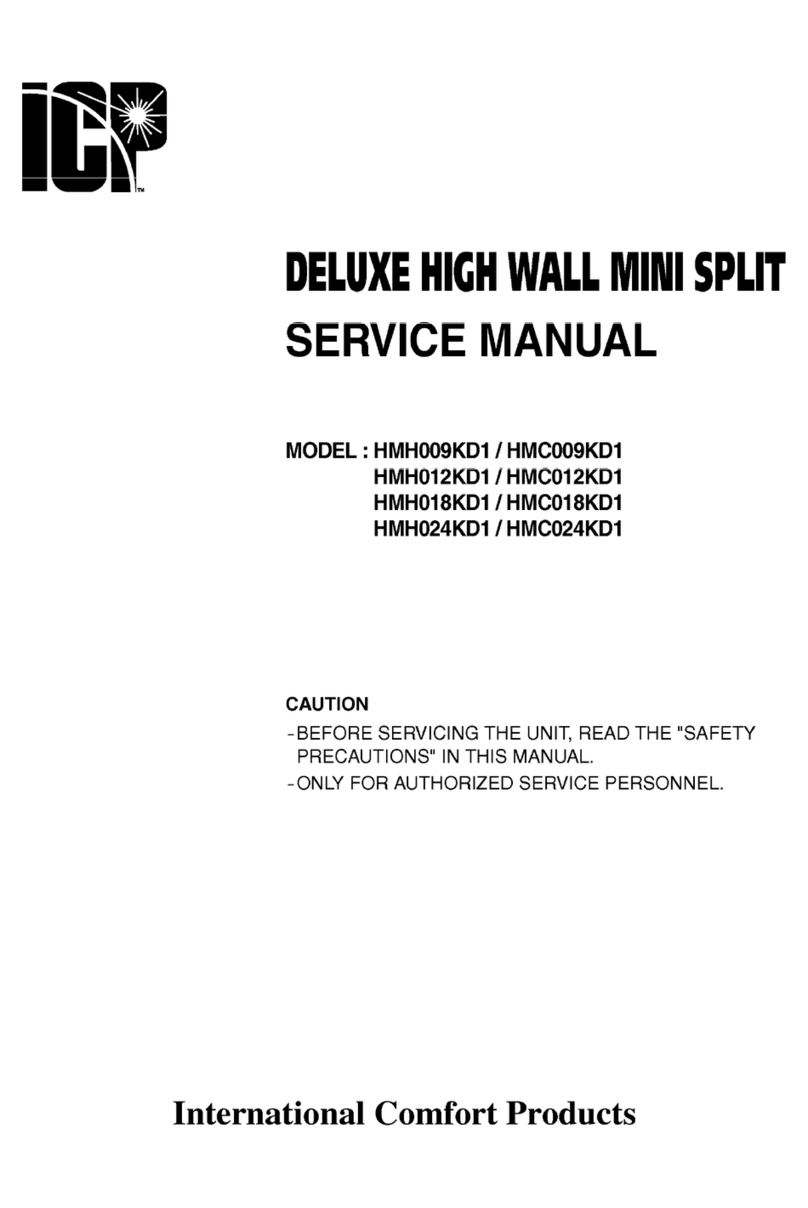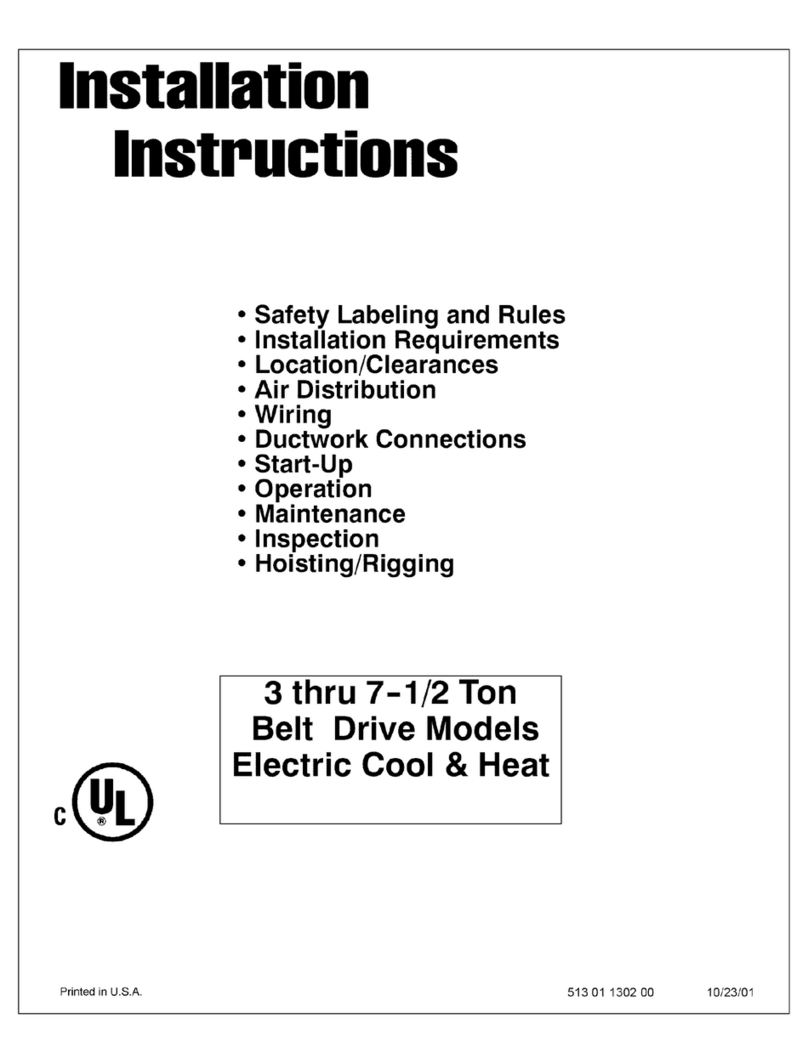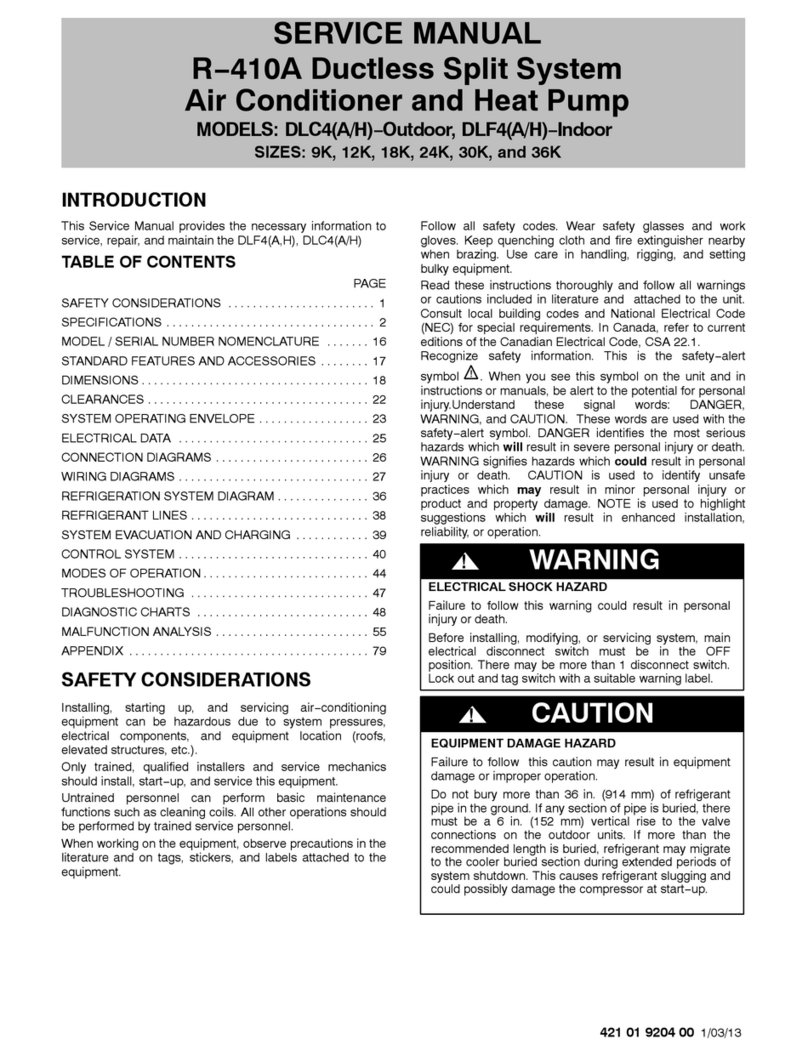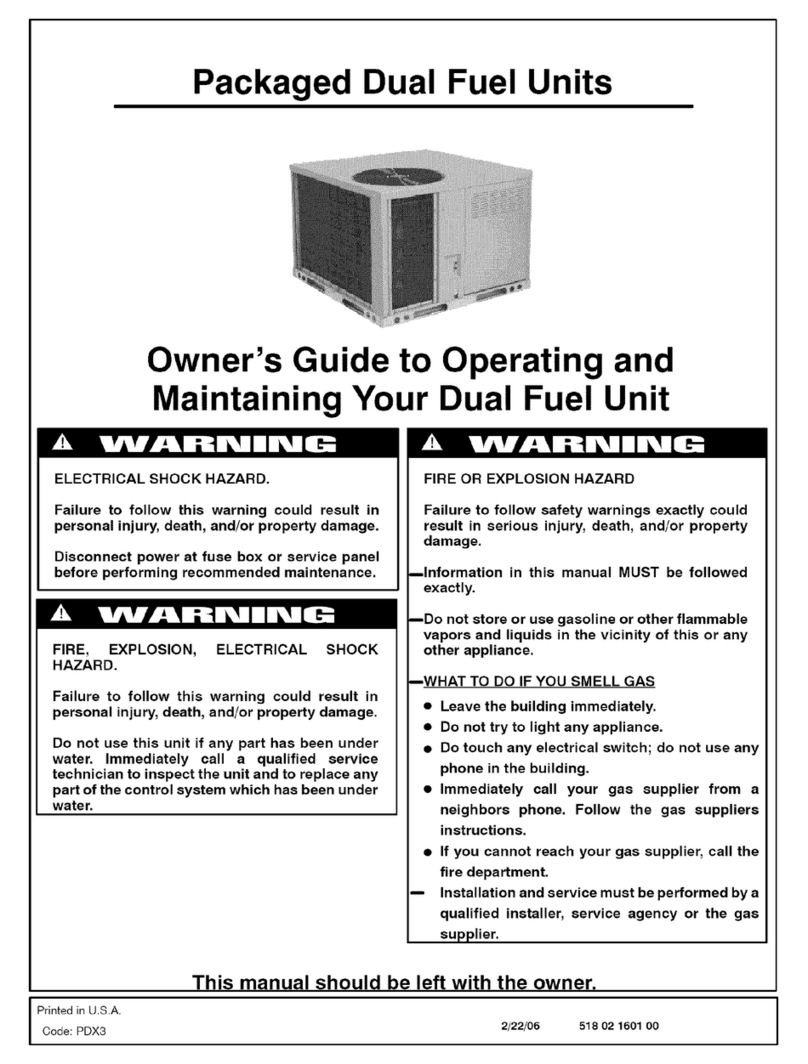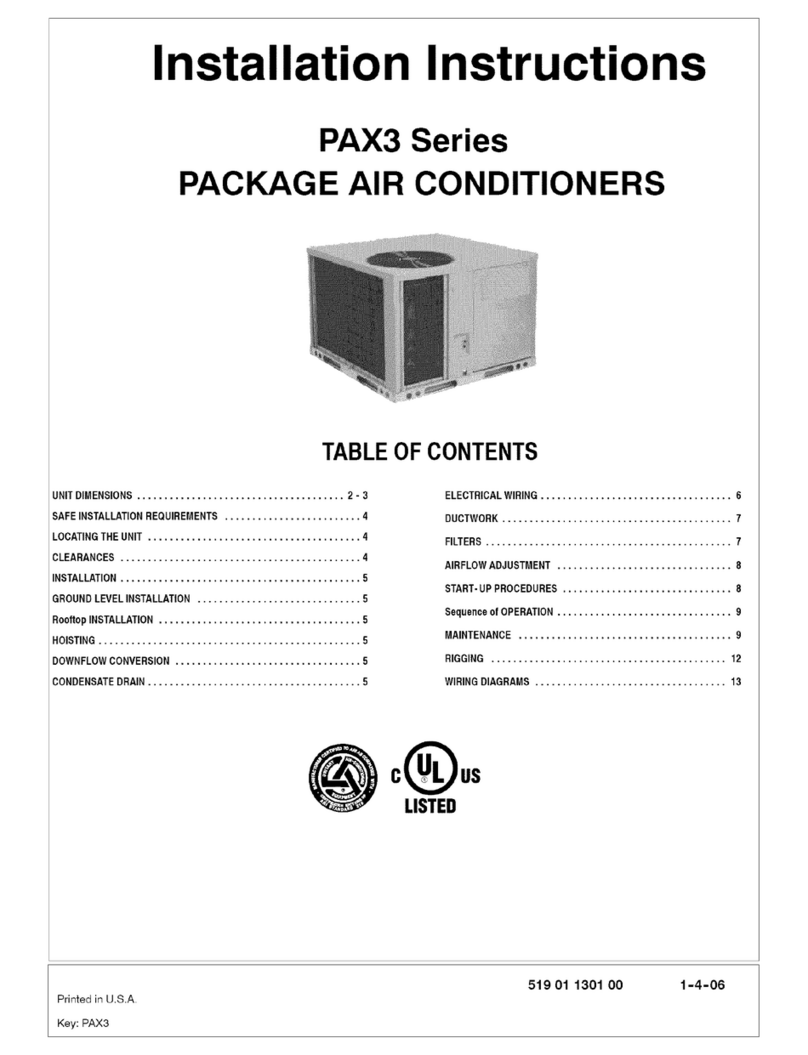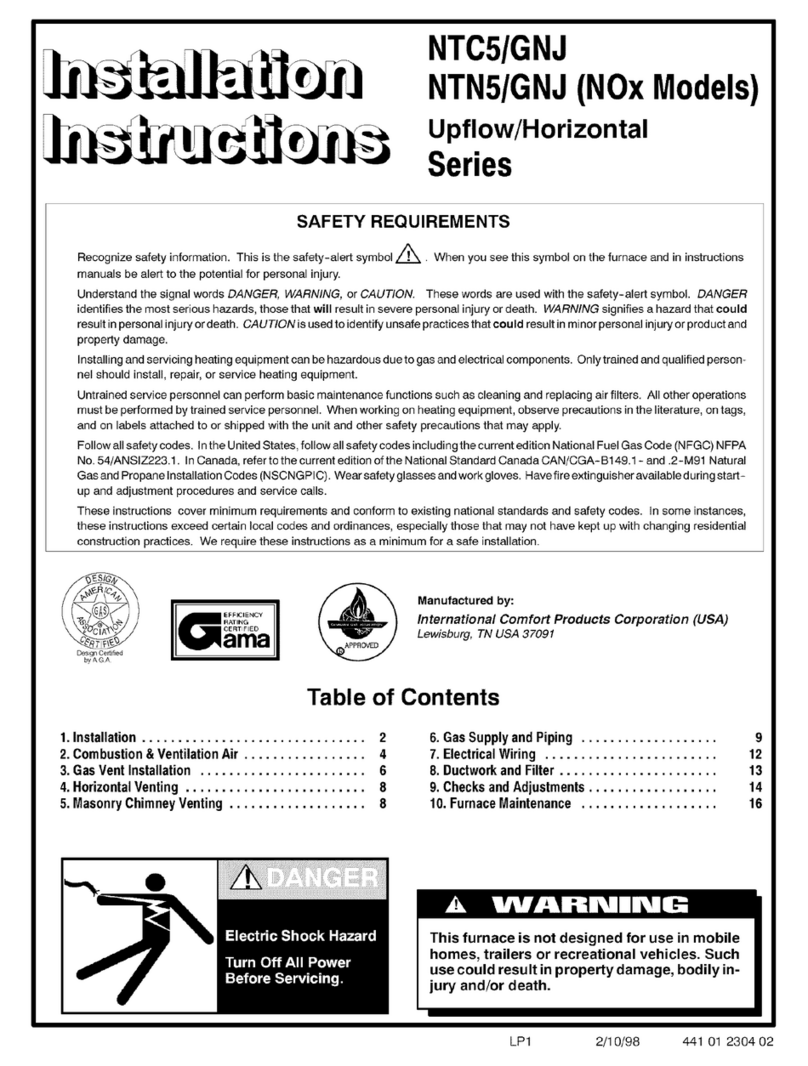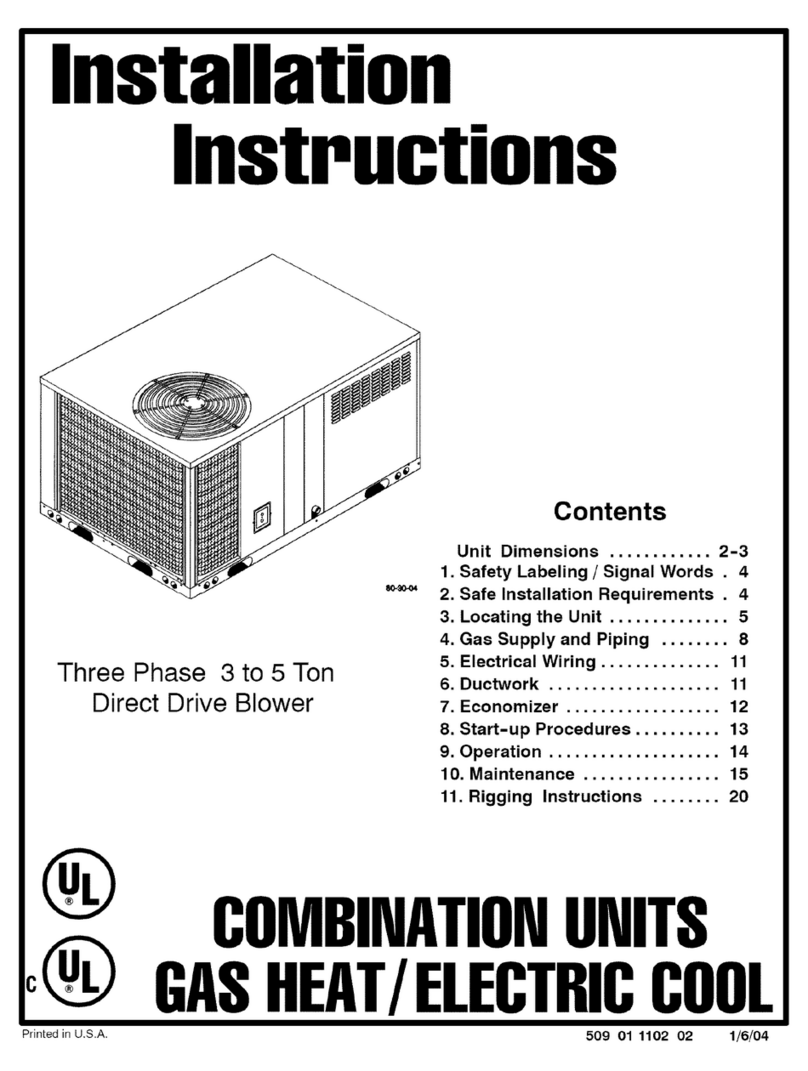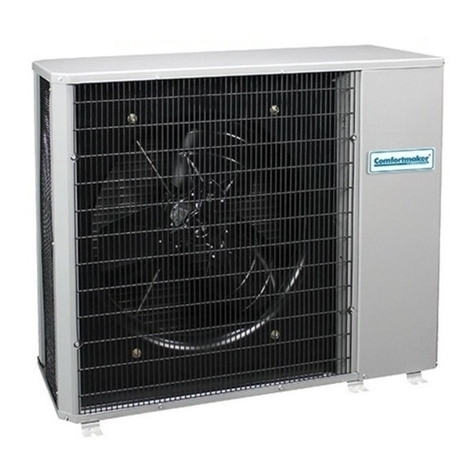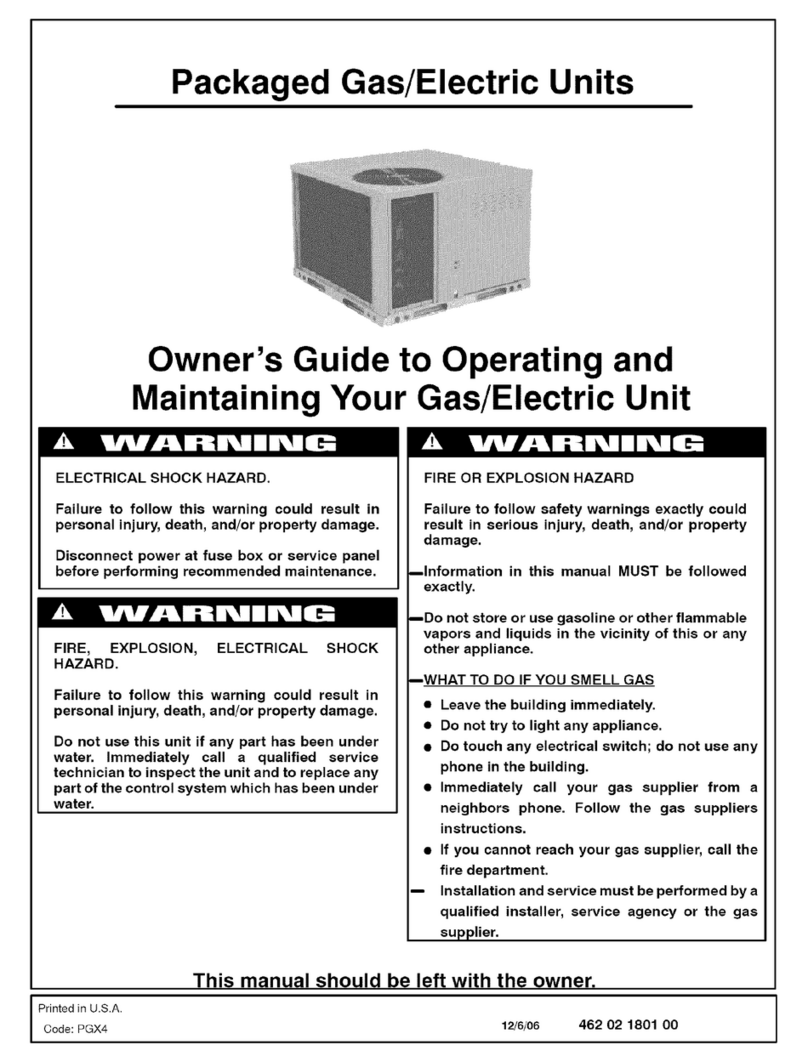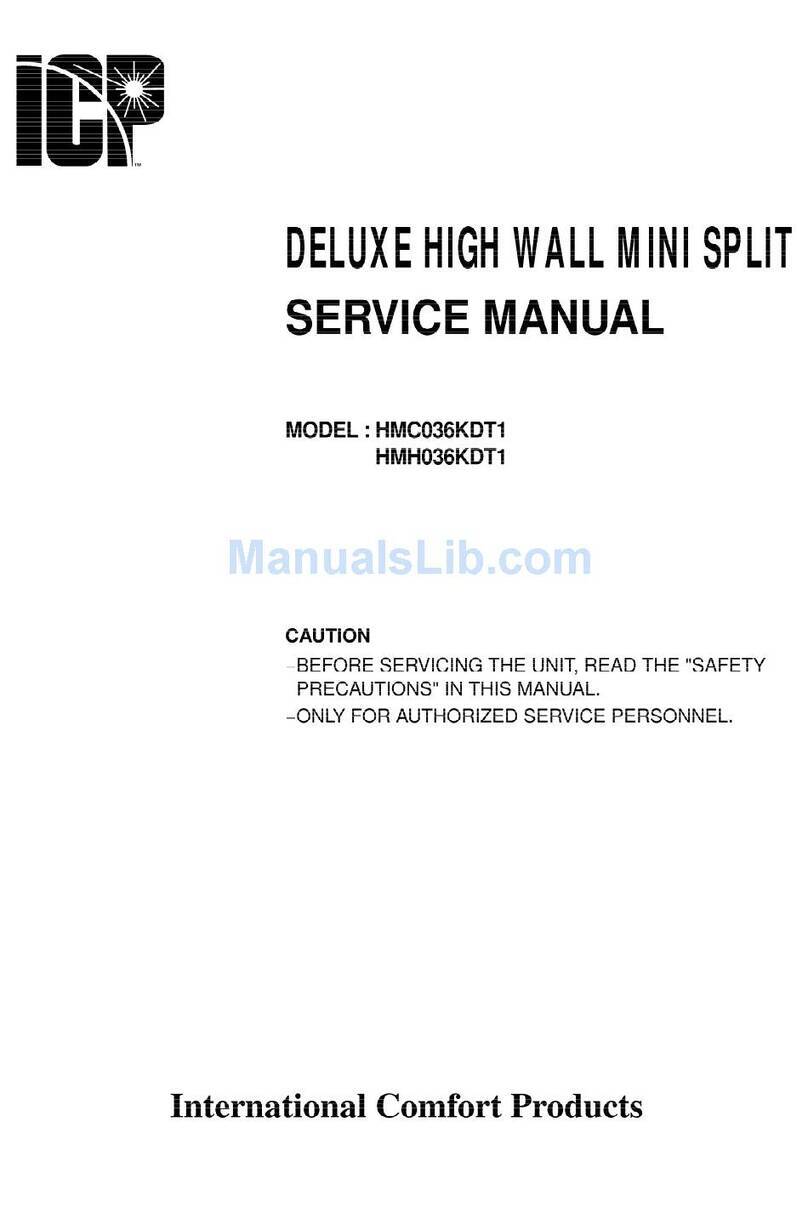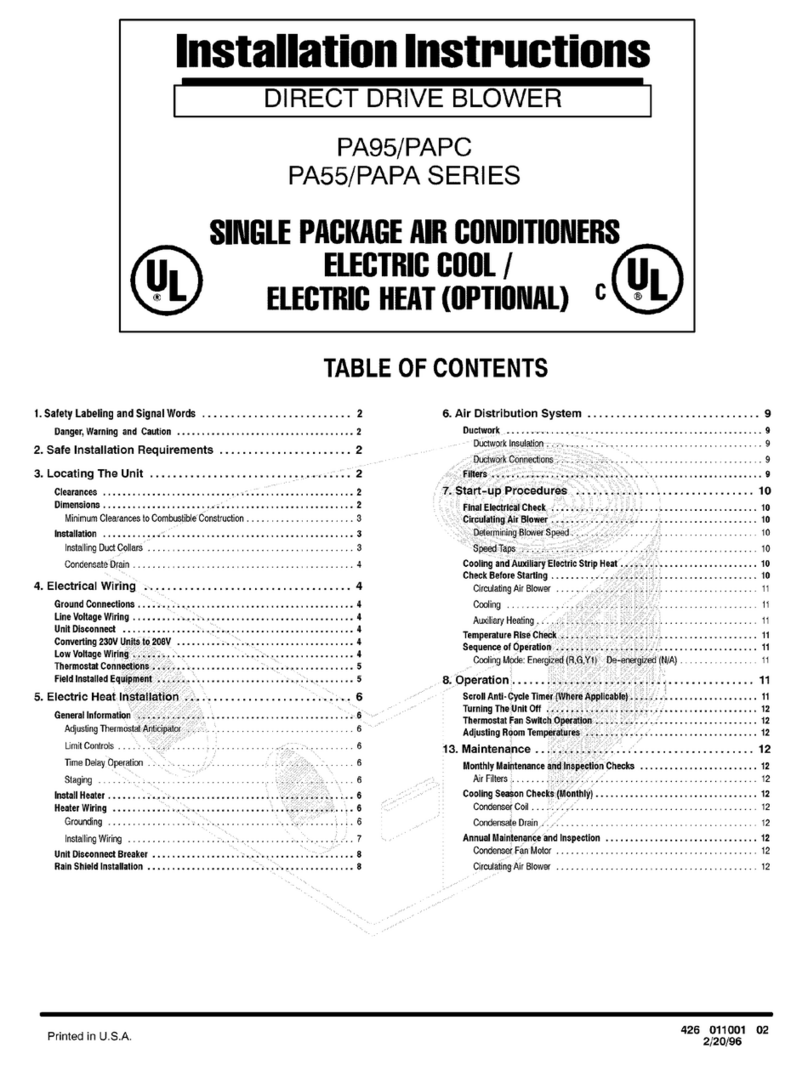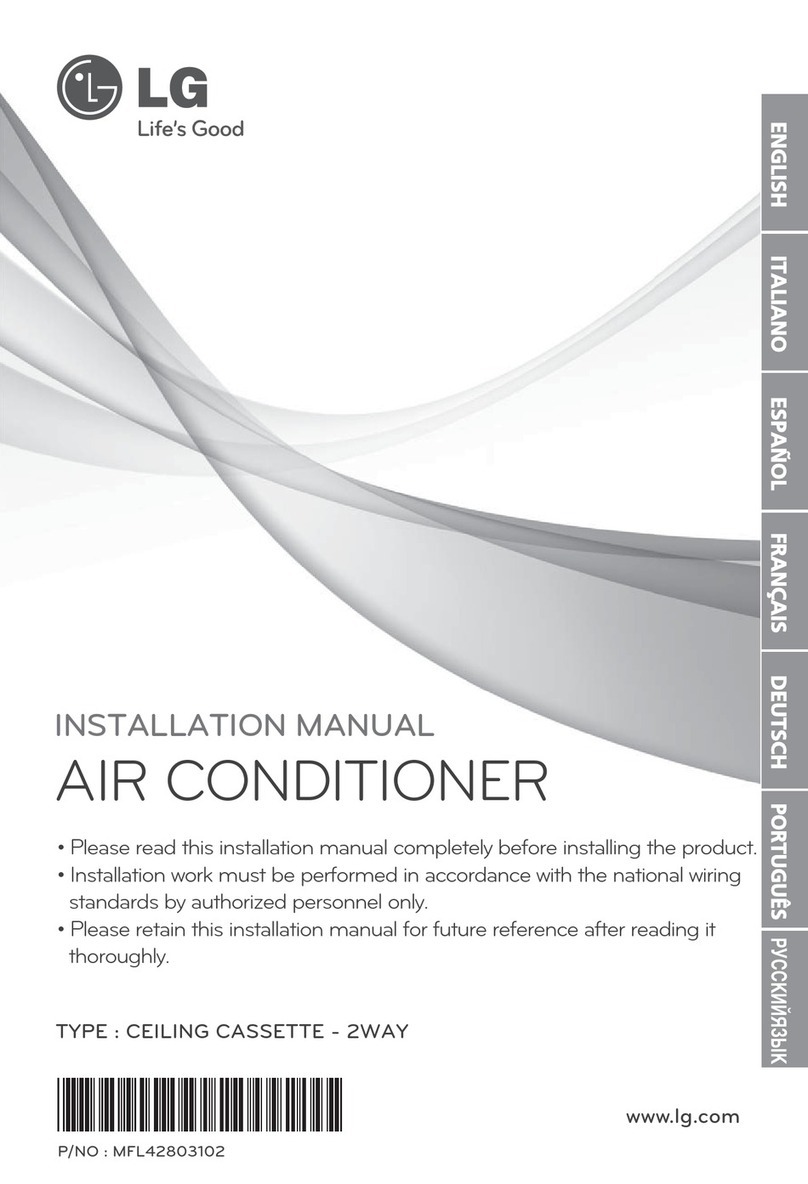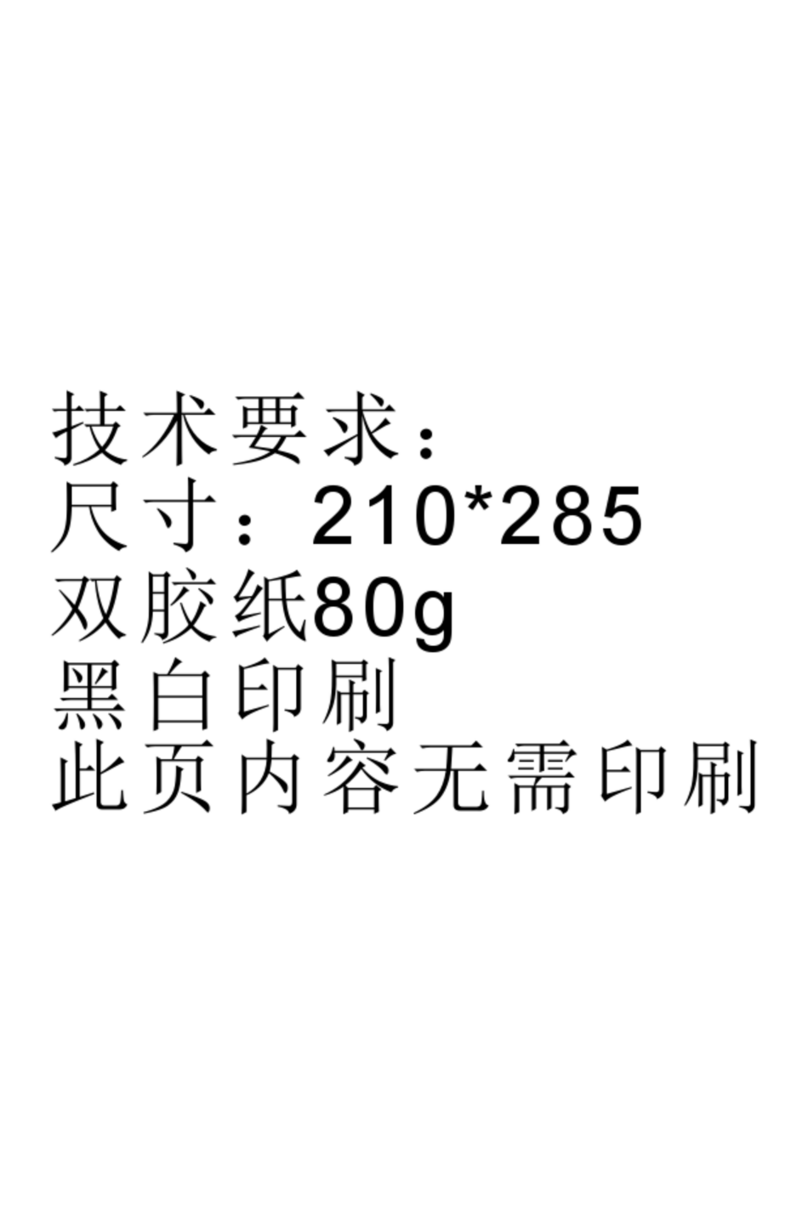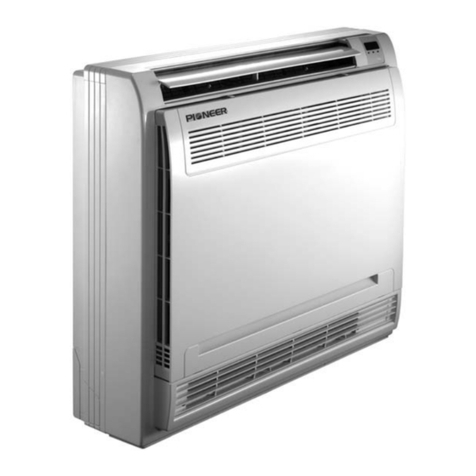B. Outdoor Thermostat (Heat Pump Units Only)
If the setscrew is left at the factow setting (in the heat pump
position), the unit will operate in the reverse cycle heating
mode. See Fig. 16. When the temperature of the outdoor coil
drops below 20 F (approximately 35 F outdoor air tempera
ture), the compressor will be disabled and only the electric
heater will be allowed to operate. The electric heater
remains enabled until the temperature of the outdoor coil
rises above 40 F; at which time the electric heater will be dis
abled attd the compressor will be enabled.
To set unit to operate in electric heat mode only, turn the set-
screw to the electric heat position. See Fig. 16.
IMPORTANT: If setscrew on standard heat pump unit is set
to electric heat mode operation, the compressor is disabled
for bofh heating and cooling operations. If setscrew on heat
pump unit with wall thermostat control is set to electric heat
mode operation, the compressor will be disabled only for
heating operation.
III. OPERATING MODES (See Fig. 17 and 18)
A. Outside Air
To bring outside air into occupied space, turn the vent
handle to the full open position, See Fig. 15.
B. Off
The OFF mode terminates unit operation,
C. Fan
The FAN mode will circulate air it] the space at high speed
attd at high or low speed for cooling only models,
D. High Heat or High Cool
Select mode and rotate temperature knob to desired comfort
level. This fimction provides maxinmm heating or cooling,
attd is recommended to raise or lower the room temperature
quickl3z
E. Low Heat or Low Cool
Select mode and rotate temperature knob to desired comfort
level. This fimction provides mininmm heating or cooling
with maximum dehumidification and quietest operation.
F. Fan Speed Control for Wall Thermostat Models
For maxinmm comfort, fat] speed is user selectable at the
unit. See Fig. 18.
CARE AND MAINTENANCE
In order to maintain proper performance of your packaged
terminal air conditioner or heat pump, it is very important
that the fat] and outdoor coil, the blower wheel, blower scroll,
electric heateL and all drain passages are thoroughly
cleaned at least once per year. Manufacturer i'ecommends
nlinimumly, cleaning should be conducted prior to the start
of each heating season. The air inlet filters should be cleaned
every month.
Depending on local conditions, more fi'equent cleaning of the
unit may be required to ensure optinmm performance and
long operating life. Examples of these special conditions
include areas where construction dust or heavy airborne dirt
is found, or enviromnents that promote the growth of fungus,
[[ H!>[ RA [kJkl m
M0[)I
OFF i
, ARHER COOLER EA I • COOL
Fig. 17 -- Standard Unit Controls
FAN SPEED
LO_
YuuRROOMIS EDUlPPED*ITHA _ALLtHERMOSTAt
kUJUSTFAN SPEEUHEREFO_ kUUEUC0MFO_r.
Fig. 18 --Wall Thermostat Control (Blank Plate)
I. INDOOR-AIR INLET FILTERS
Indoor-air inlet filters should be cleaned once each month.
IMPORTANT: Filters may become clogged if not cleaned prop
erl3< Clogged filters will restrict airflow which may lead to
severe component damage and efficiency loss.
Cleaning Indoor-Air Inlet Filter
Two interchangeable air filters are located on the backside of
the front panel. Each can be removed and cleaned one at a
time. To remove and clean the filter, follow the steps below:
1, Grasp filter with both hands,
2. Gently pull the filter up and away from the unit. See
Fig. 8 attd 19.
3. To cleat] firm; use a vacuum or soft bristle brush with
a small amount of mild detergent.
NOTE: If detergent is used, remove any detergent residual
with a gentle stream of clean water
4. Allow filters to air dry
5. Re insert dry filters back into front panel.
Additional filters are available in multi-packs. Refer to
Accessories section.
II. EXTERNAL PARTS
External parts include the polymer sleeve and grilles. The
sleeve manufacturer recommends cleaning the surface,
including the grilles, with household detergent and water
8

